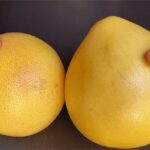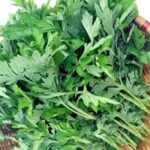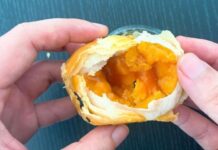In terms of appearance, củ năng has a small, flat, round shape similar to an onion but with a thick, black peel, and a white interior. When consumed raw, củ năng has a taste and texture reminiscent of corn, with a crisp, sweet, and juicy flavor. At local markets and supermarkets, the price of 1kg of peeled củ năng ranges from 100,000 to 120,000 VND/kg. Once a relatively unknown food item, củ năng has gradually become more common and popular among consumers.

Củ năng is a plant that grows in water – Illustration.
According to BS.CKII Huynh Tan Vu, Lecturer at the Faculty of Traditional Medicine, Ho Chi Minh City University of Medicine and Pharmacy, 100g of củ năng contains approximately 69% water, 18.75% starch, 2.25% protein, 0.19% lipid, as well as vitamins A, B1, B2, C, and pectin. It also contains calcium, phosphorous, and iron salts, along with a compound called puchiin, which has antibacterial, blood pressure-lowering, and cancer-preventive properties, especially for lung cancer.
Additionally, củ năng is considered a nourishing food that can aid in the treatment of cardiovascular diseases, diabetes, and reducing the risk of kidney stones. It also helps in the rapid recovery of intestinal health due to its slow-digesting fiber and starch content.
Dr. Vu mentioned that in the past, củ năng was primarily consumed as a snack, but nowadays, it is commonly used in various dishes favored by young people, such as milk tea and sweet soups. It can also be juiced or ground into powder, depending on individual preferences. However, it offers the following health benefits:
Detoxification and Liver Cooling
Củ năng is often used as a food-medicine to induce a cooling effect. It can be chopped into small pieces and cooked with mung bean powder to make chè lục tàu xá (a traditional sweet soup) or braised with pig stomach to create a dish that helps clear heat, nourish the body, improve digestion, and detoxify. It can also be consumed in powder form to cool the liver, stomach, and intestines.
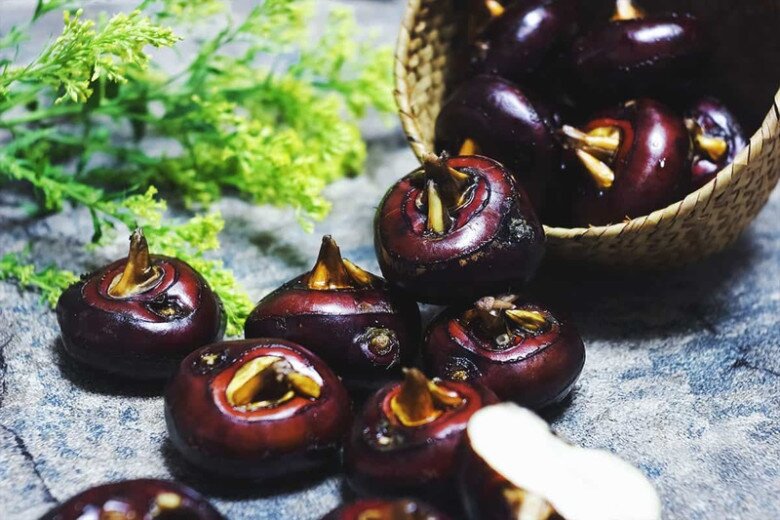
Củ năng has a purple peel and a white interior – Illustration.
Cardiovascular Benefits
Recent studies have indicated that củ năng may contribute to improved cardiovascular health by reducing blood pressure and cholesterol levels.
Digestive Health
The fiber and starch in củ năng are slowly digested, promoting intestinal health and enhancing digestion.
Thyroid Health
Củ năng juice is rich in potassium, an essential mineral for muscle and nerve function. Additionally, the iodine and manganese content in củ năng helps support thyroid health.
Hangover Relief
For individuals who consume excessive alcohol and experience discomfort and a heated sensation in the stomach, củ năng juice mixed with a little lemon and salt can help limit the absorption of alcohol toxins and counteract the internal heat.
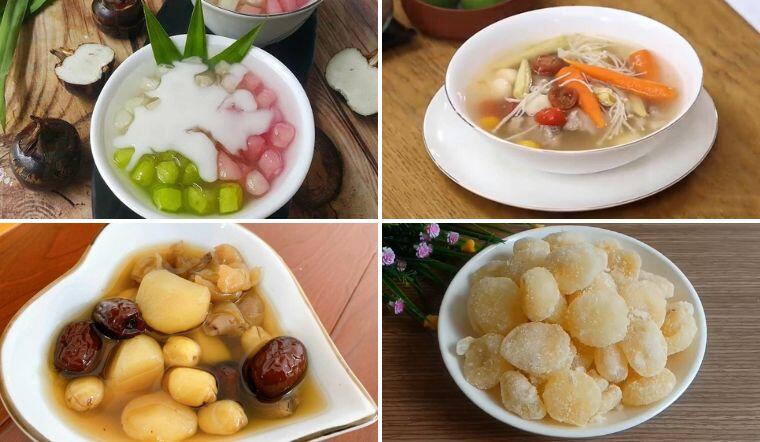
Củ năng can be used to create various delicious dishes – Illustration.
Precautions when consuming củ năng
According to Dr. Vu, in traditional Chinese medicine, củ năng is considered cooling in nature and may not be suitable for individuals with a cold constitution or those exhibiting symptoms such as aversion to cold, cold hands and feet, abdominal pain, and loose stools.
Moreover, since củ năng grows in muddy water, it can be susceptible to parasitic infections. When peeling, it is advisable to cut deeply below the stem, as this area may harbor intestinal parasites. Consuming raw củ năng carries the risk of ingesting parasitic cysts, which can lead to an intestinal parasitic infection after a few months. Symptoms of such an infection include abdominal pain, diarrhea, nausea, frequent loose stools, and foul-smelling feces. Therefore, it is recommended to use củ năng in medicinal recipes, infuse it in alcohol, or consume it in the form of juice or cooked dishes.



























